Inti Raymi
The Spanish had yet to arrive in Peru but there was such frantic activity throughout the empire in the week leading up to the 24th of June that it was obvious that something just as big was happening. In fact it happened every year and was very important – but thankfully well-rehearsed Inca rituals meant there was no real cause for alarm.
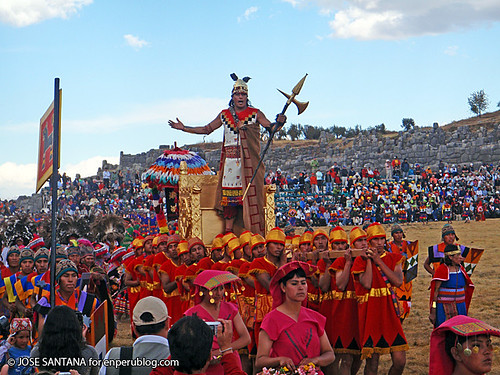
Sapa Inca (Photo: José Santana)
The sun, the father of the Incas they called the Inti, had been at its lowest point in the sky for a few days now. It was the Winter Solstice. The Inti had already been stopped from sinking further and disappearing altogether by the combined efforts of Incas across the vast empire. Intihuatanas that occupied sun temples across the Andes had been used to hitch the sun to the earth, saving the Andean world.
Now, on the 24th, it was time to celebrate. According to the Pacha Unachaq measuring device, the sun was starting its rise today – a new year would be born. On the morning of the 24th, in the heart of the Inca Empire – the city of Q’osqo – Inca priests and hundreds of people would wait for the morning’s sun rise. Also waiting would be other priests in other cities across the Inca world. Today when the sun rose, it would rise slightly higher in the sky at noon marking the new year. A Llama would be sacrificed by the priests and offering placed in the Koricancha sun temple – then the festivities would begin.
After the Spanish conquest this important festival wasn’t abandoned. The Spanish installed their puppet Inca emperor Manco Inca Yupanqui (Manqu Qhapaq II) and in 1535 the last Inti Raymi was celebrated in the presence of Inca royalty. After his rebellion against the Spanish and his death, Quechua peoples continued to celebrate the event until the Spanish completely banned it in 1772 for being against Catholicism. The traditions went underground.
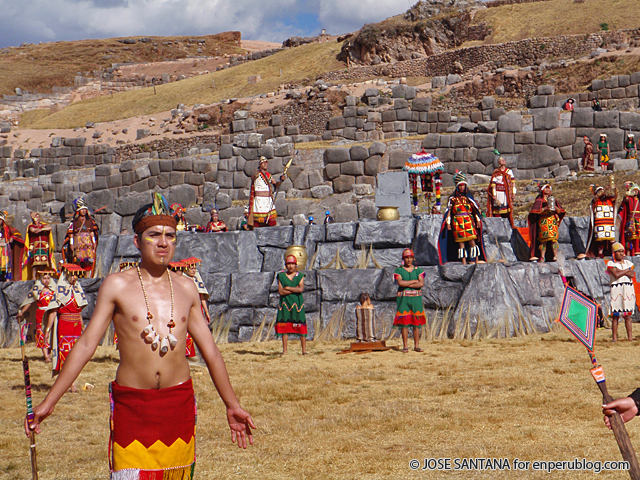
The revived Inti Raymi is enjoyed by proud Cusqueños and tourists alike
In 1944 the celebration was revived in its home of modern-day Cusco. A new-found pride in history was developing in Peru and a historic representation of Peru’s glorious past was demanded. Over the decades it became an event that now attracts uncountable numbers of tourists.
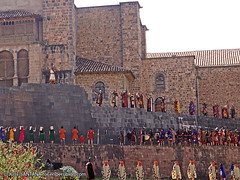
Koricancha, centre of the Inca world (Photo: José Santana)
Rather than being held in the Q’osco plaza that no longer exists in it ancient form, the immense site of Sacsayhuamán is used. The Sapa Inca, played by an actor, is carried here from the Koricancha where the inti is invoked and a speech is made inviting everyone to celebrate the return of the sun.
With the Inca emperor are the priests of the Koricancha who follow behind in their ceremonial robes. Afterwards come the nobles and members of the Inca’s court. Then everyone else.
At Sacsayhuamán, with huge crowds waiting, the Sapa Inca climbs onto a sacred altar, an ushnu, surrounded by the priests and representatives from the four corners of the empire. With everyone in place, the Sapa Inca, the priests, representatives and religious icons speak to the crowds in native Quechua. Ceremonies are carried out, including the sacrificing a white llama. The high priests hold the heart up to the sun before offering it to Pachamama – mother earth – in the hope they will be provided with a good crop in the new year.
At the end of the day-long event, fires are burnt and dances performed. The time of celebration has begun and carries on well into the night, while the emperor blesses his people and returns to his palace for his feast.
Tags: cusco, incas, inti, inti raymi, manco inca, traditions




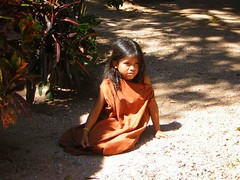
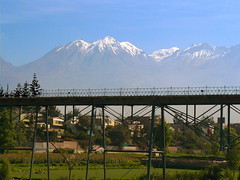




![Peru’s hard-hitting Oscar film hope divides opinion [Featured]](http://farm5.static.flickr.com/4002/4407554620_1f45162f92_m.jpg)